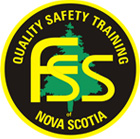Hydraulic Jacks
(Including Port-A-Power Units)
Hazards Identified
Slipping, crushing injuries, overloading of jack, hydraulic hose rupture
Hazard-Specific Personal Protective Equipment
Eye protection
Hazard-Specific Training
Familiarization with the specific equipment being used
Safe Work Practice
- Choose a jack rated for the task to be done.
- Before use, inspect the hydraulic jack for leaks, broken parts or damaged, kinked or sharply bent hoses or lines. Make sure that it is operating properly.
- Ensure that the hydraulic jack is on a firm foundation. Provide a solid base if used on soft ground.
- Position cylinder plunger so it has full contact with the load.
- If so equipped, use hydraulic gauges to check proper operating pressures.
- Operate the pump away from the load, and always avoid the area beneath the load.
- Use shut-off and check valves only for temporary load holding.
- Use cribbing and blocking for sustained holding.
- Jack stands or blocking must be used while working under the load.
- If using hydraulic jacks with a combination of hose and pump, ensure that all components are compatible and are rated for the pressure to be used.
- Ensure that the hydraulic jack is inspected once per year by a competent person.
Regulations, Standards and References
Occupational Safety General Regulations, Manufacturer’s Manual or Operating Instructions for the specific hydraulic jack being used
